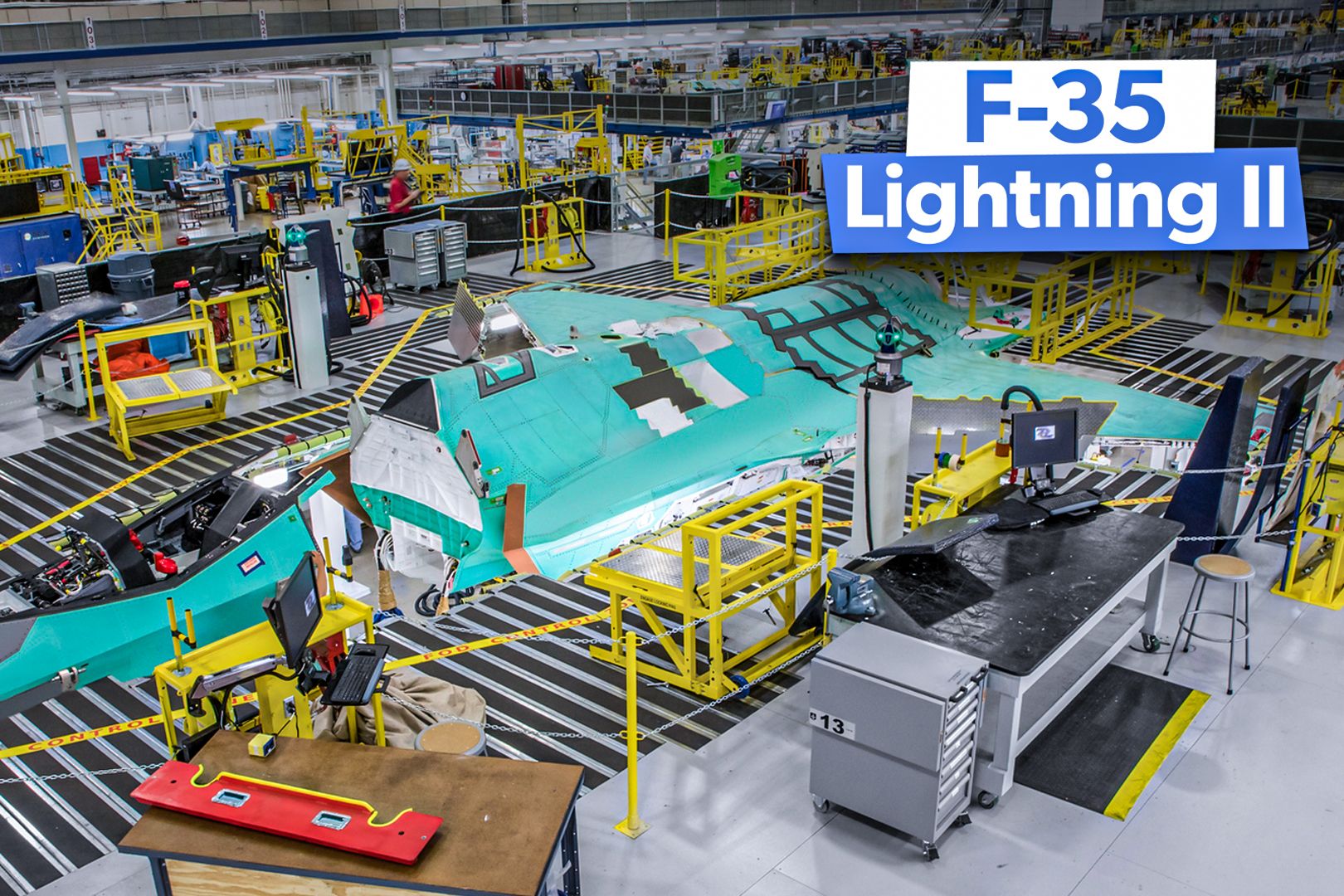Summary Projected F-35 builds range from 3,000 to 3,500 worldwide, with over 1,000 already built. US Air Force is the largest F-35 customer; approx. 50% of total jets (F-35A variant) expected.
International orders expected to total 700 to 800, with notable buyers including Japan and the UK. In an email to Simple Flying, Lockheed Martin clarified many of the current production numbers of the F-35, although the exact number of F-35s that will eventually be built is uncertain. However, it is expected that between the US service branches and international purchases, at least 3,000 and perhaps over 3,500 will be built over the program's lifetime.

This means up to a third of expected F-35s have already been built ( Lockheed recently announced it has delivered the 1,000th F-35 ). Lockheed Martin's F-35 is now more numerous than all other fifth-generation fighter jets combined. It is expected to remain the most popular and widely operated stealth jet for years to come.
United States Air Force The US Air Force is by far the largest customer for the F-35 and is expected to order around 50% of the total F-35s. All Air Force F-35s are the F-35A variant, and around 1,763 fighter jets are expected to be purchased eventually by the service. The Air Force first declared F-35 Initial Operational Capability in August 2016.
F-35 program in 2024: US Air Force FY 2025 procurement: 42 (planned) US Navy FY 2025 procurement: 13 (planned - possibly rise to 19) US Marines FY 2025 procurement: 13 (planned) 2024 F-35 production (includes exports): 75-110 Expected stable production rate: 156+ per year (starting 2025) Number delivered (total): Over 1,020+ (milestone reached 2024) The US Air Force operates F-35As in air bases across the United States as well as the Royal Air Force Lakenheath in the United Kingdom. In May 2024, the Government Accountability Office stated the US has around 630 F-35s in service across all services, with plans to purchase another 1,800 or so more. In an email to Simple Flying, Lockheed Martin stated it expects to have a stable production rate of 156+ F-35s per year starting in 2025.
This is across all Final Check Out Facilities (there are one in Japan and one in Italy), but the vast majority will be at the main facility at Fort Worth, Texas. The F-35 stealth fighter has three very distinct variants optimized for three US service branches. US Marine Corps & Navy The US Marine Corps is expected to purchase mostly the F-35B (STOVL) variant, although it will also procure a significant number of F-35Cs designed for large aircraft carrier operations.
The Marines are expected to purchase 353 F-35Bs and 67 F-35Cs. The Maines declared Initial Operational Capability in July 2015. Expected F-35 procurement: United States Air Force: Approx.
1,763 United States Marines Corps: Approx. 420 (includes 353 F-35Bs and 67 F-35Cs) United States Navy: Approx. 273 International Orders: Approx.
700 to 800 Total: At least 3,000, perhaps more than 3,500 The US Navy plans to eventually procure 273 carrier-based (CV/CATOBAR) F-35C jets. Together with the Marine Corps, the Navy will be the only operator of the F-35C. The Navy was the last service branch to bring the F-35C into service, declaring Initial Operational Capability in 2018.
The Navy is currently undergoing the long process of recertifying its aircraft carriers to operate the F-35Cs one by one as they go in for their midlife refits. Washington seems to have conflicting ideas on whether to approve, slash, or increase the number of F-35s the DoD has requested. International F-35 orders Many US allies and trusted partners around the world have purchased or announced deals to buy the F-35.
Notable countries include the United Kingdom (where a significant share of the F-35 components are built), Japan, Italy, Israel, South Korea, and Australia. More countries like Greece and Romania have only recently announced deals to purchase the advanced jet. F-35 production breakdown by variant: F-35A: Over 700 F-35B: Almost 200 F-35C: Almost 100 International orders are expected to total 700 to 800 F-35s.
Most of these will be F-35As, with only the UK, Italy, and Japan purchasing F-35B variants for their respective navies (the UK's RAF is also joint-operating F-35Bs with the Royal Navy). Notable international partners ( program of record ): Japan: 127+ (105 F-35As and up to 42 F-35Bs) United Kingdom: 74-138 (F-35Bs) Australia: 75-100 (F-35As) Israel: 75 (F-35As) Canada: 80 (F-35As) Italy: 90 (60 F-35As and 30 F-35Bs) South Korea: 60 (F-35A) Estimating international sales is difficult for many reasons. One reason is that many countries (such as the United Kingdom) seem unsure of how many they want to purchase.
The UK first wanted to procure 150 F-35s but then reduced this to 138 and later signaled it might reduce this to just 74. However, since the Russian invasion of Ukraine, the UK has recently indicated that it may purchase 138 after all. Another limiting factor in estimating eventual production is geopolitics.
The US places significant restrictions on the use of the F-35 (including which pilots are permitted to fly them) and bans countries (even allies) from buying it for many reasons . For example, Turkey had planned to purchase 100 F-35As, but it was kicked out of the program after purchasing Russian S-400 SAMs. Recent reports suggest Turkey may be willing to give up its S-400s to be readmitted to the program, although it is unclear if the US still has an interest in selling Turkey its prized jet.
Agreements to sell the UAE 50 jets and Egypt 20 jets seem to have floundered. Qatar and Saudi Arabia (and possibly Thailand) are known to want to purchase them, but the US appears to have barred them from the program. If the US were to sell jets to all these countries, Lockheed Martin could likely receive as many as 400 new orders for the F-35A variant.
.



















